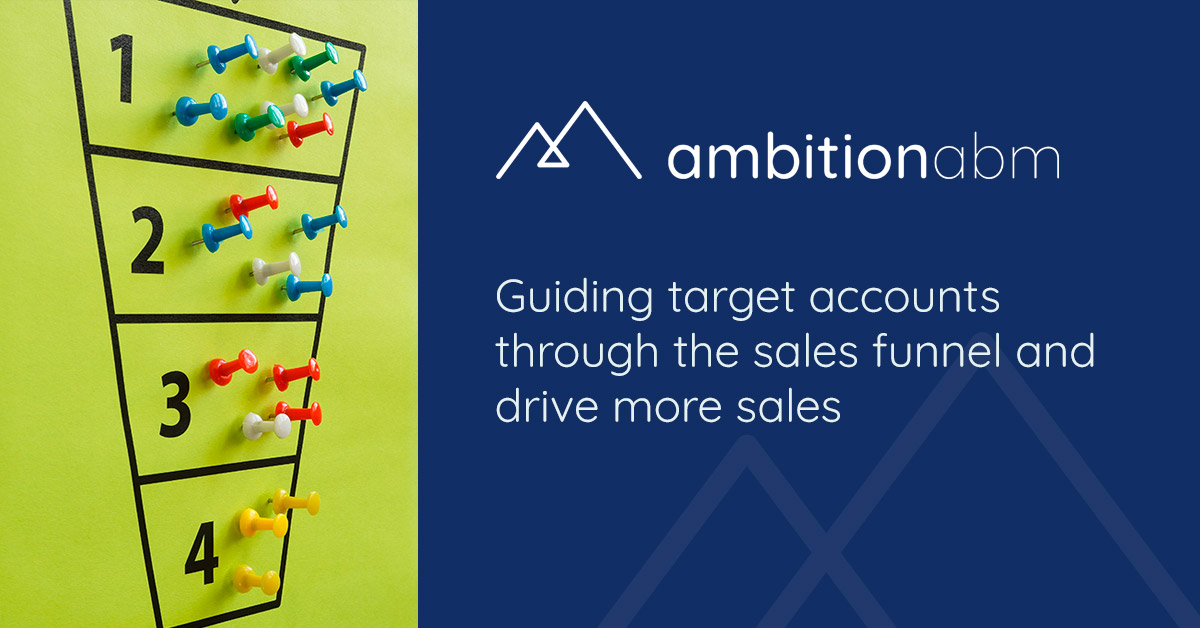Three key phases to ensure successful ABM campaigns
If you’re a tech company, you’ll likely soon be turning your thoughts to strategy and budgeting for 2021 (yes, even amidst the coronavirus chaos, plans must be forged for the coming year).
At AmbitionABM, we’ve been talking with both prospective and existing clients this week about an essential component of successful ABM – aligning sales and marketing teams.
By defining clear processes, assigning key responsibilities, and defining terminology, staff can be brought together in effective communication and skilled collaboration as they work towards designing, implementing, and managing a super-successful ABM approach.
We can’t stress enough the importance of helping your sales and marketing teams understand how their roles are both similar and different, in order to excel independently and support each other in a cohesive approach that’s seamlessly successful.
Alignment can be achieved in three key phases: business alignment, functional alignment, and executional alignment.
In this week’s post, we’ll discuss the first phase – business alignment – which addresses how ABM should be matched to overall company goals and values, along with the importance of setting this out in an ABM charter.
Business alignment is easy to understand when broken down into steps:
1. Understanding company strategy.
What’s the long-term vision for your organisation? How and where do you envisage growth will take place? And what steps will you make to achieve this? Perhaps your company will attempt to enter new markets in 2021, you’re working towards introducing new products and services, or you’re planning to pivot and adjust your offer to changing demands?
2. Aligning your goals.
Pinning down where your business is heading over the coming year will allow you to identify ABM goals that align with your desires, like identifying new potential buyers in existing accounts, or shifting focus to laying the groundwork for brand new accounts.
Establishing a long-term strategy will give sales and marketing teams a shared focus when building an action plan that identifies the total addressable market, agrees on routes to targeting the right accounts, and makes concrete decisions about how best to approach decision makers via channels like social selling and personalised direct mail.
3. Developing an ABM charter.
The ABM charter is an important final step in the ‘Business Alignment’ process, as it links up the scope and activities of your campaign with your goals and values in a tangible way, holding all involved accountable for their involvement.
The ABM charter binds sales and marketing teams together around a clear strategy with challenging but realistic goals, with different sections that summarise key strategy elements including vision, objectives, scope, who will be involved, what their core activities will be, milestones in the campaign and overall timeline.
The ABM charter should also include vital information including critical success factors, assumptions, risks and both budgetary and time constraints.
In most instances, the ABM program lead will complete the charter, though everyone who will be involved in implementing the campaign should be given the opportunity to contribute (ABM is always a collaborative approach, and this is a useful exercise in bringing together sales and marketing teams with a common focus).
It’s also important that the charter is published internally, not only to sales and marketing leaders but to cross-functional team members, regional staff, and high-level execs who should be kept abreast and involved with ABM activities. Publishing the charter also draws a line in the sand, as it shows all involved that the work will be taken seriously and those involved will be held accountable for the part or parts they play in ensuring its success.
At AmbitionABM, helping sales and marketing teams align in both their expectations and actions is a key part of our work with large tech companies, along with helping draw up ABM charters that set out key campaign events so that everyone is up to speed, on the ball, and ready to roll out successful ABM campaigns.
Next week, we’ll focus on functional alignment, ensuring that sales and marketing teams have a shared view of engagement planning requirements that drive successful ABM.
Don’t miss it!











